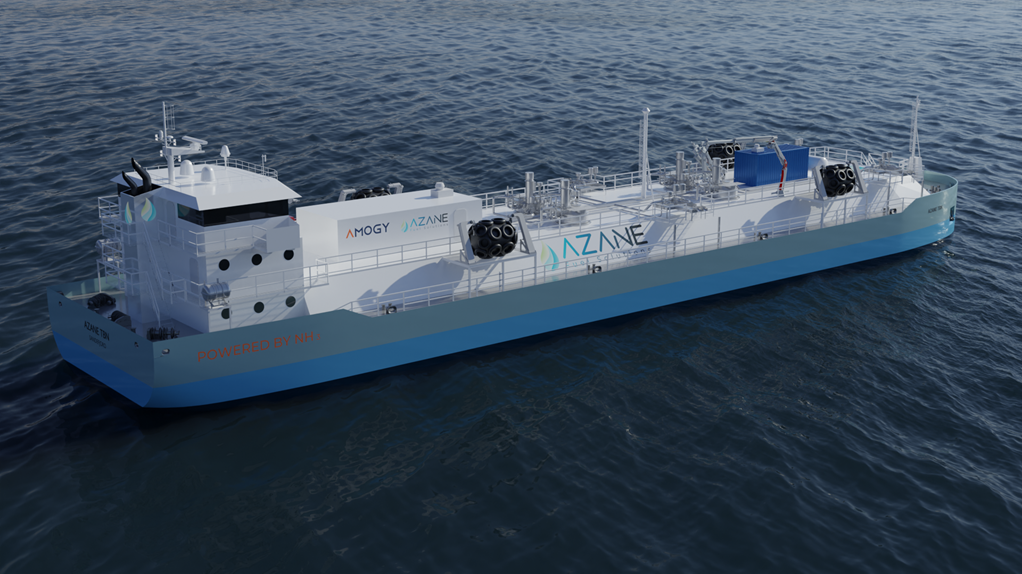Amogy and MSB jointly explore potential opportunities to collaborate with their respective technologies and commercial applications across the ammonia-powered shipping and shipbuilding value chain.
Tokyo, Japan, June 28, 2024 – Amogy, a provider of mature, scalable, and efficient ammonia-to-power solutions, and Mitsubishi Shipbuilding Co., Ltd. (MSB), a part of Mitsubishi Heavy Industries (MHI) Group, have completed the feasibility study of collaboration concept designs of onboard hydrogen production and utilization with Amogy’s ammonia-cracking technology and Mitsubishi Ammonia Supply and Safety System (MAmmoSS®).
Amogy and MSB concluded a Memorandum of Understanding (MoU) to undertake feasibility studies on an ammonia fuel supply system, with the aim of contributing to a new target set by the International Maritime Organization (IMO) of net zero greenhouse gas (GHG) emissions in the maritime industry by or around 2050. The studies were conducted by the two companies to confirm the feasibility of two collaboration concept designs – a power train combining ammonia cracking and hydrogen fuel cell for ships – a hydrogen supply facility for supplying hydrogen as pilot fuel to ammonia fuel engine.
Because ammonia is carbon-free, it has attracted attention as a fuel with the potential to contribute significantly to reducing GHG emissions in the maritime industry, and it is expected to be utilized in the future as a source of stable, clean energy. To unlock the potential of ammonia, Amogy has developed an innovative ammonia-to-electrical power system that splits, or “cracks,” liquid ammonia into its base elements of hydrogen and nitrogen, which then funnels the hydrogen into a fuel cell, generating high-performance power. MSB will promote the decarbonization of the maritime industry, realize a carbon-neutral society, and contribute to the reduction of environmental impacts on a global scale by continuing to develop marine ammonia handling systems, such as fuel supply systems for a wide range of ammonia fuel consumers include this collaboration for onboard hydrogen production and utilization.
Source: Amogy.
Tags: Ammonia, Amogy, GHG, Mitsubishi



Recent Posts
Port of Brisbane Unveils Vision 2060 to Drive Smarter, Cleaner, and More Connected Future
Wärtsilä to Deliver Hybrid Propulsion Systems for Vertom Group’s New Low-Emission Vessels
Latvian port receives electric Konecranes Gottwald Mobile Harbor Crane
Sustainable Ocean Economy Vital for Human Development, Says UNDP at UN Ocean Conference
Green Hydrogen Costs in India Could Drop by 40%, Says IEEFA-JMK Report
Cavotec Secures €1.55 Million Shore Power Contract for Port of Antwerp-Bruges
APM Terminals and SANY Marine sign landmark agreement to accelerate decarbonisation
The Port of Gothenburg takes big step towards shore power connection for container and car/RoRo vessels